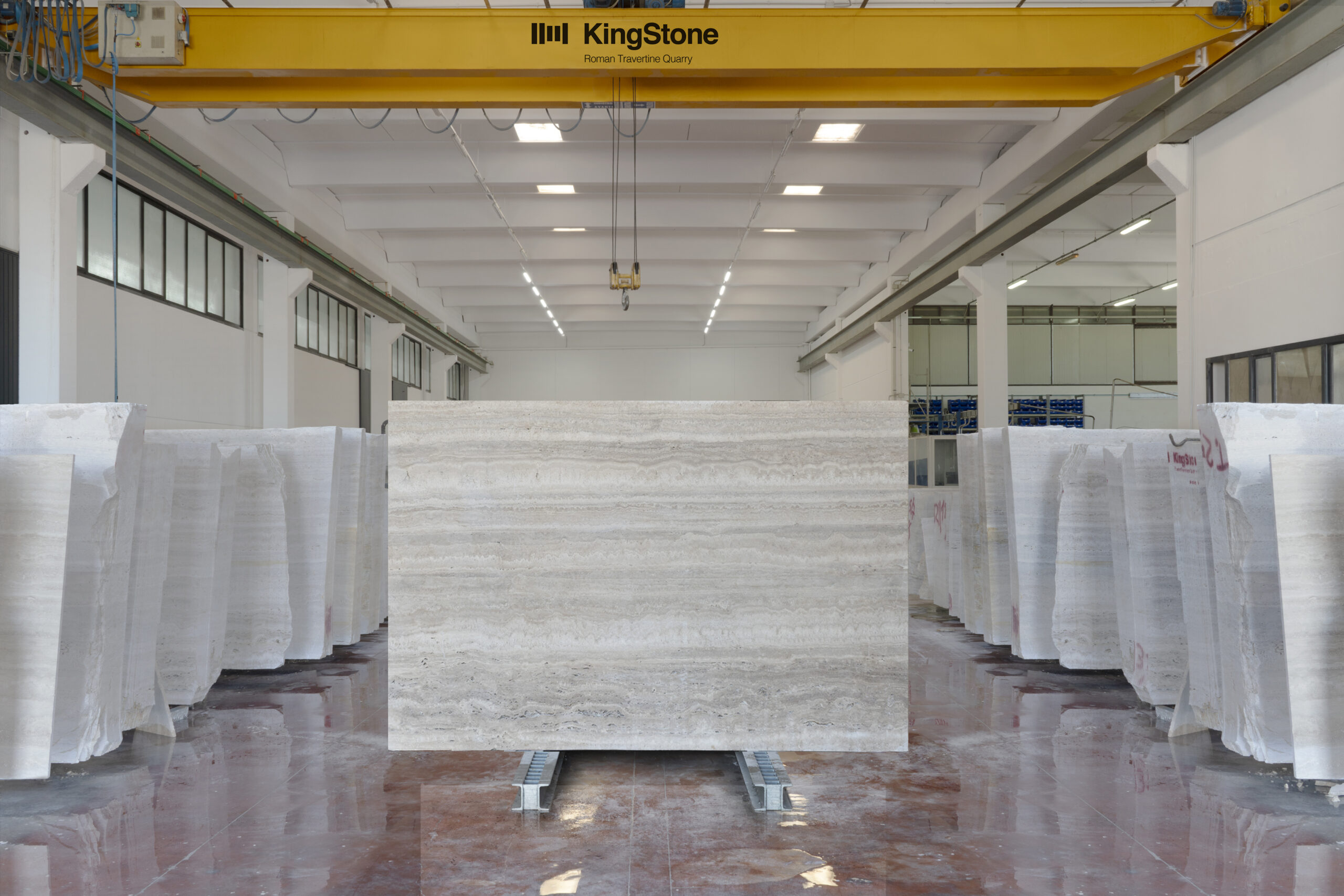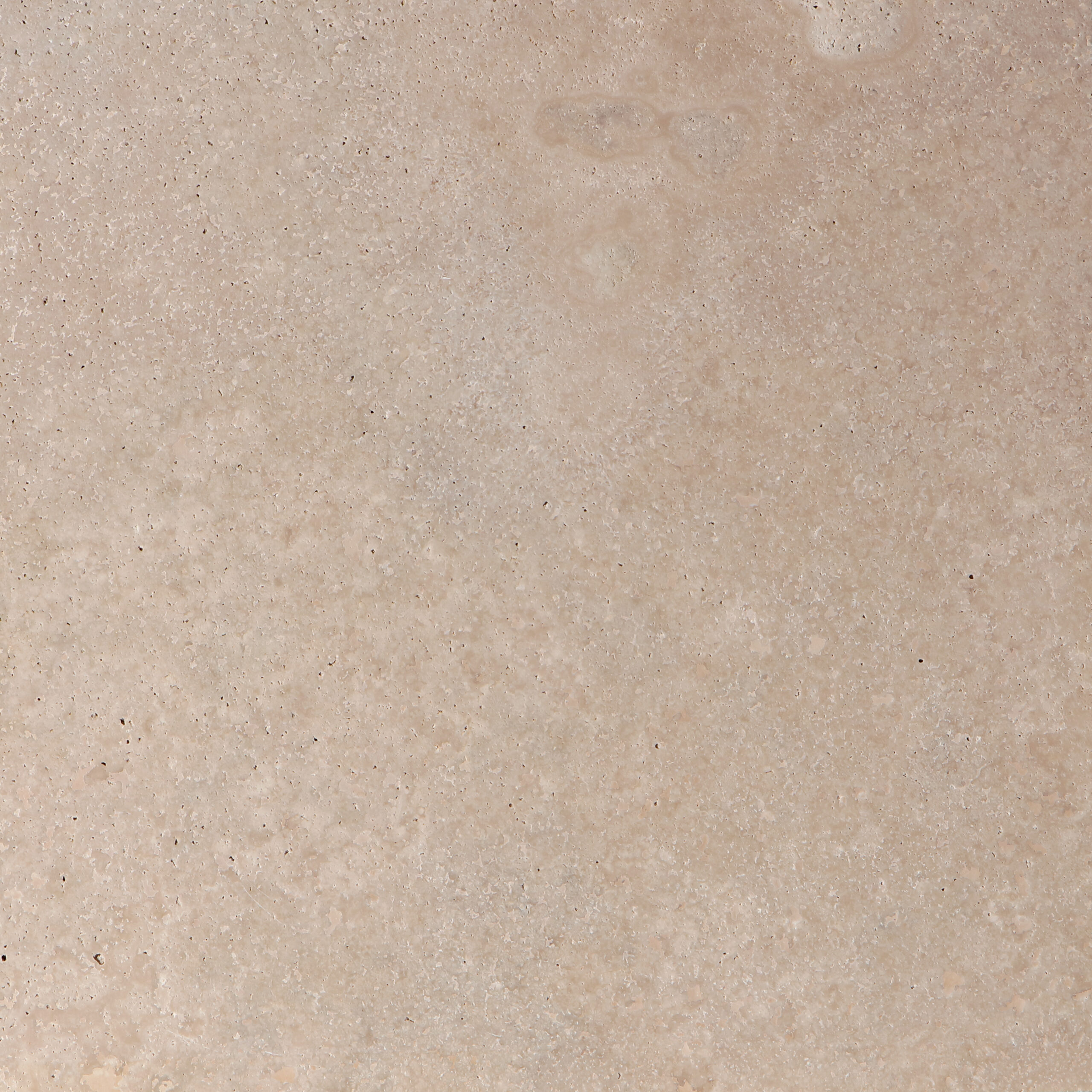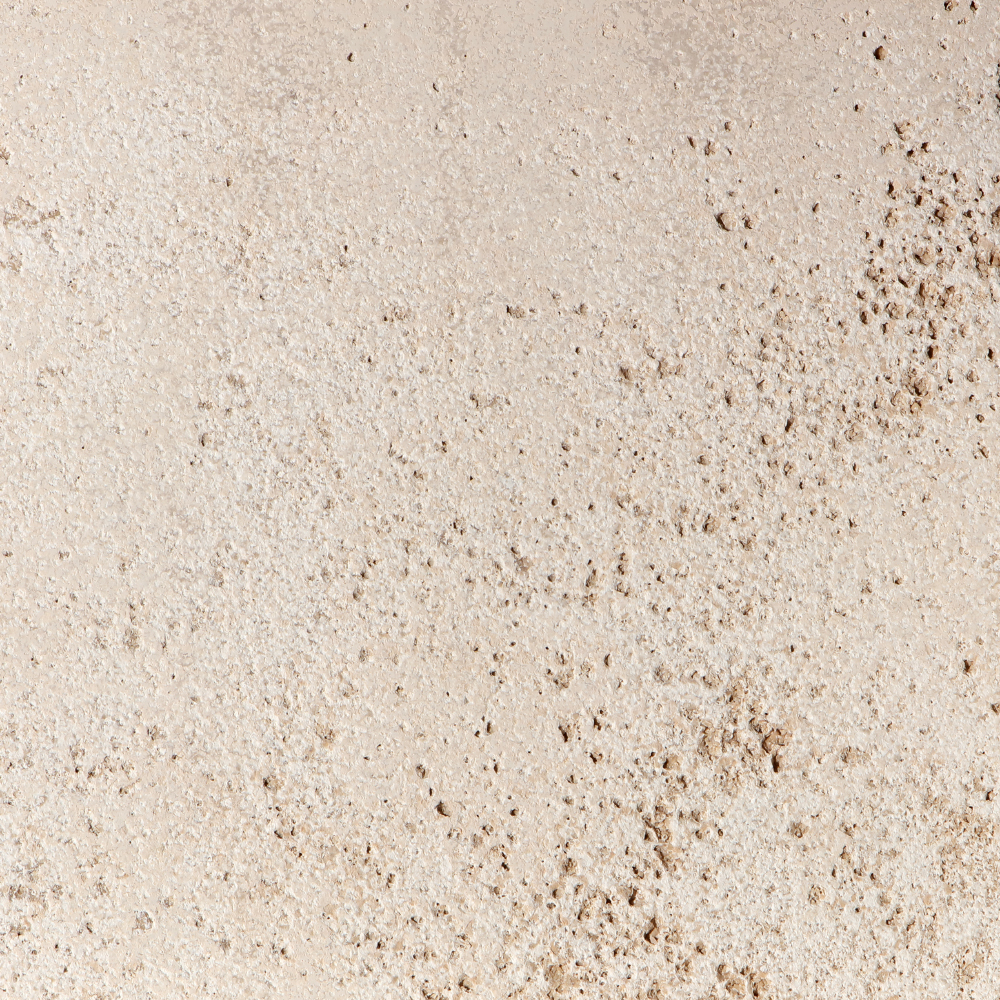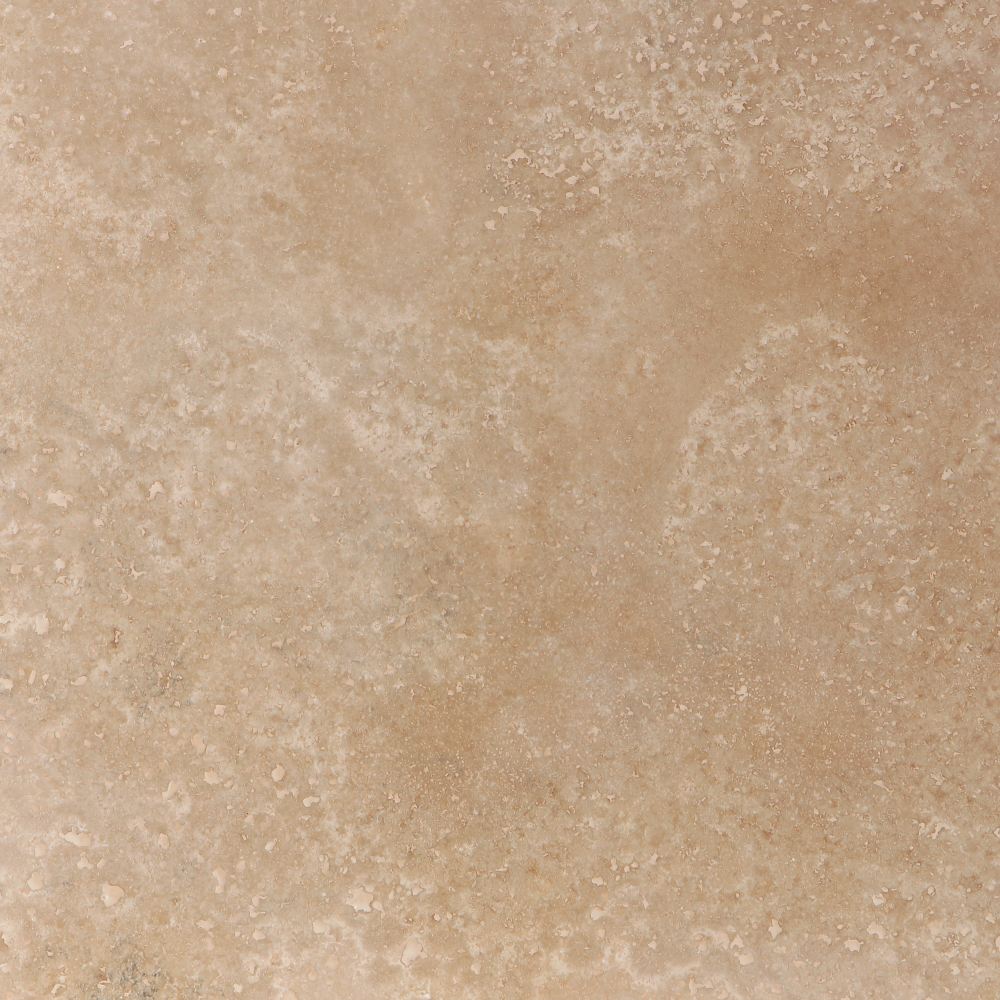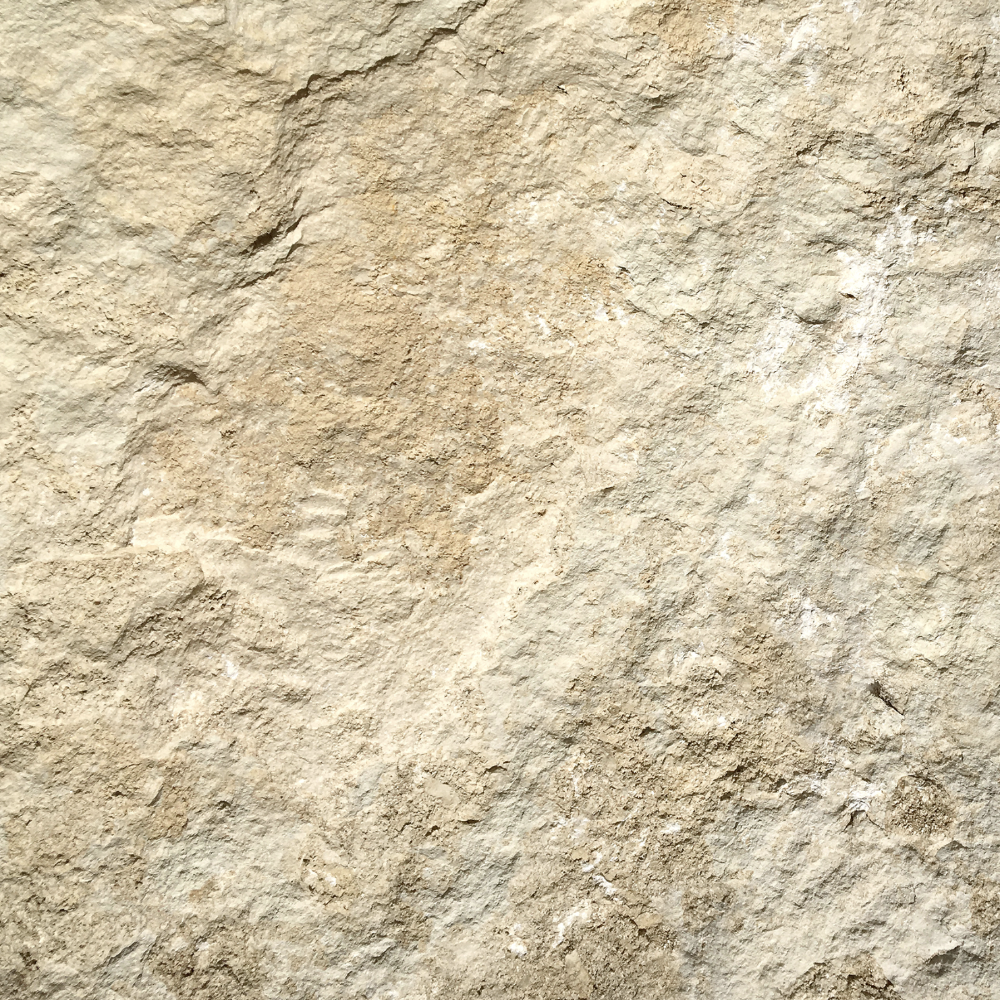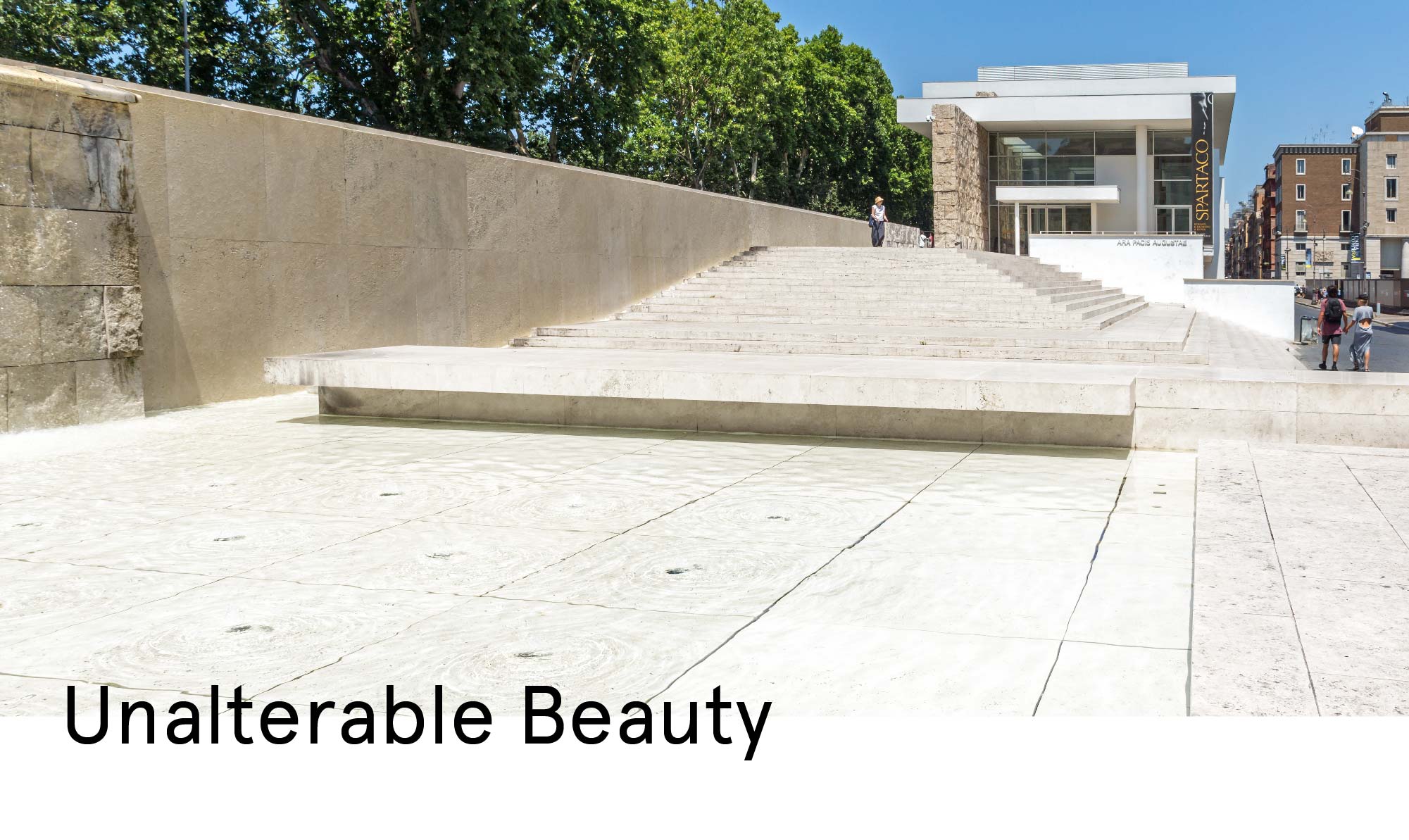
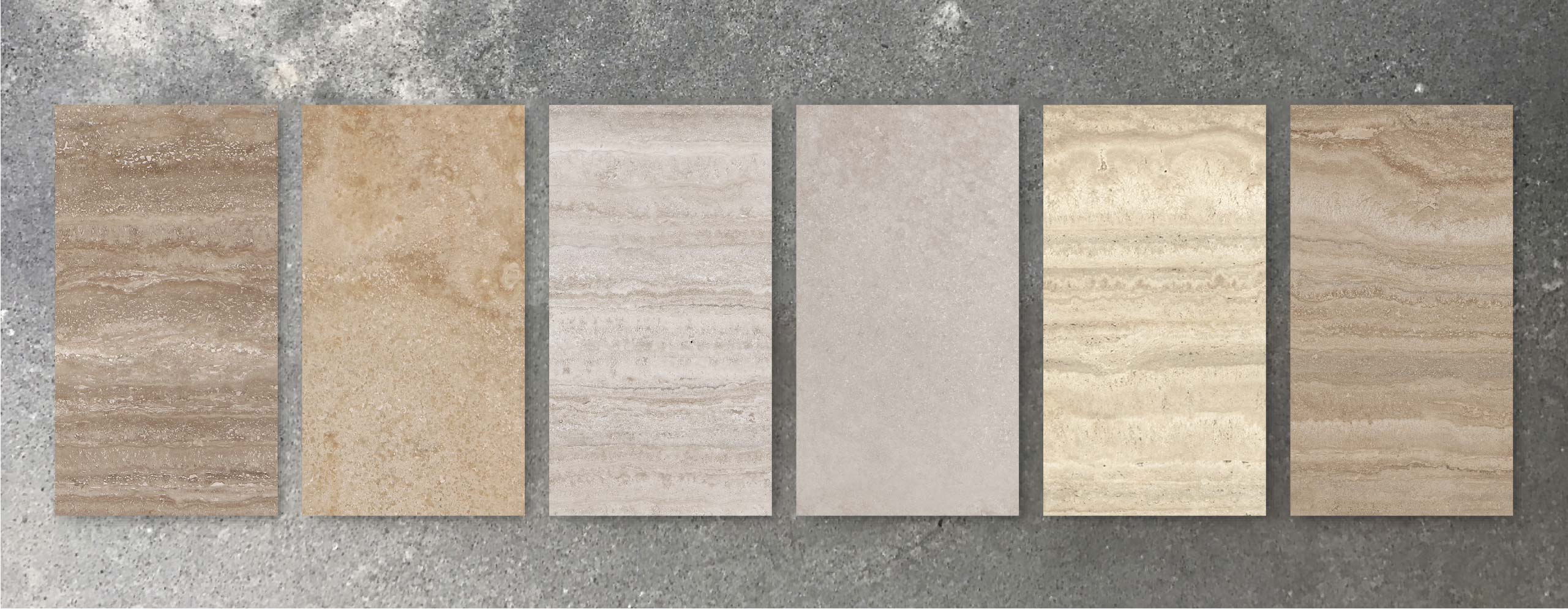
Travertine cutting
Vein cut and cross cut refers to the direction of cut, the first is perpendicular to the stratification instead the second is parallel to the stratification.
The cutting of travertine is very important as the final result is so different that suggests two different materials, even if they come from the same block. The vein cut, the most common type, shows marked and clear streaks, the layers of sediment run lengthwise. The cross cut, also known as “fleuri-cut and increasingly used, shows patterns that are often circular in shape revealing flowery, the so-called “nuvolature”.
The filling
“Filled” or “unfilled” terms pertain to the stone’s voids / porous / holes.
Unfilled travertine means that travertine is not treated therefore it remains in its natural porous state. The holes are exposed creating a rustic-looking finish. Filled travertine means that the travertine’s pores are filled with colour-matched material (cement, mastic, resin), creating a smooth homogenous surface. The filling can be technical, raising the level of resistance and compactness of the travertine, decorative, according to the finishes desired.
Appearance
The unique textures make it looks timeless, the low colour variation allows each tile to blend perfectly with the next, creating a smooth and sophisticated composition.
Variety
Travertine comes in multiple finishes and colour that are suitable for different usage areas.
Finishes 
The beauty of travertine is enhanced thanks to the numerous finishing methods, every finish aims to display the travertine’s natural beauty and thanks to its toughness and compactness KingStone travertine guarantees an excellent polishing without equals.
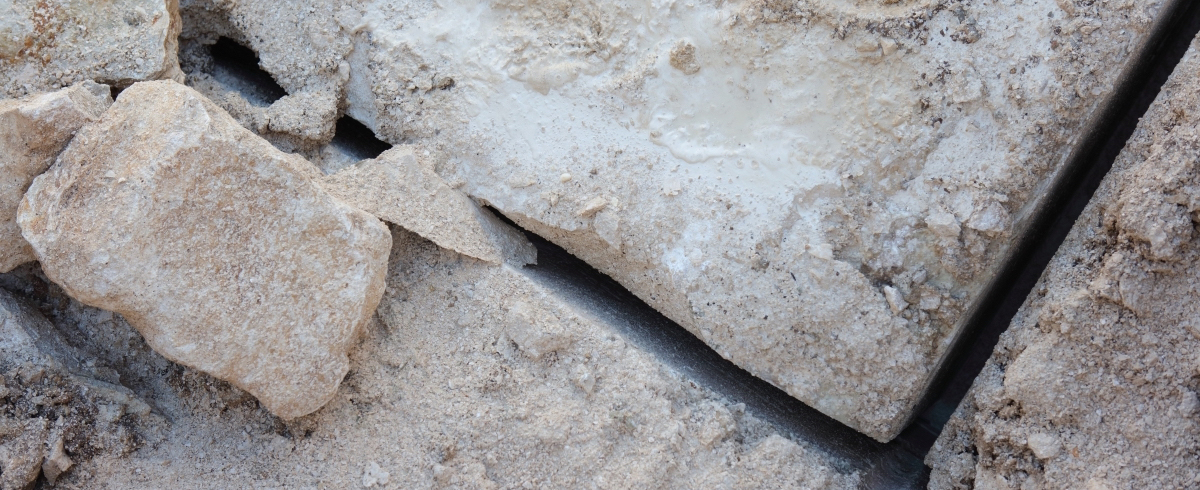
Applications 
[/col]
[/row]
Indoor flooring
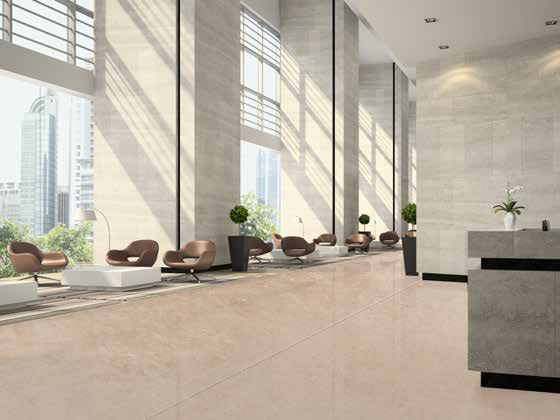
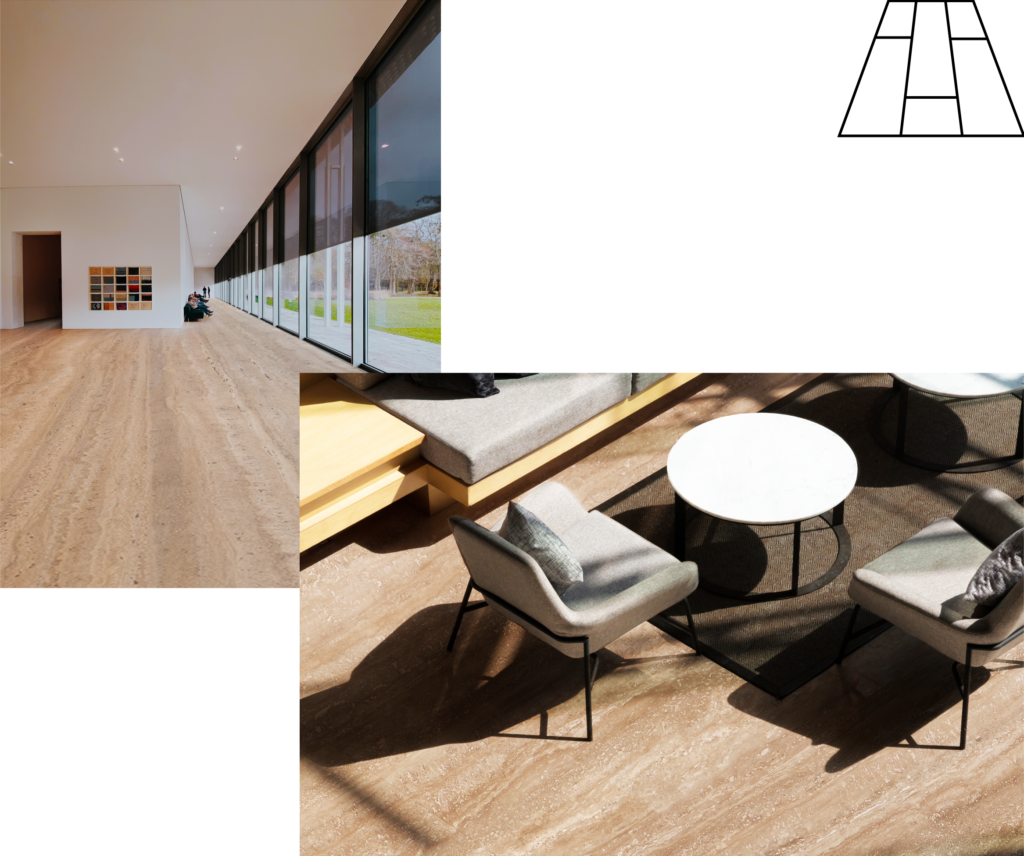
Travertine is ideal for floorings. Each space is enhanced by this material as it creates elegant and exclusive interior design. The vein cut or cross cut travertine creates creative pattern, with textures that make each surface unique.
Indoor Wall Cladding
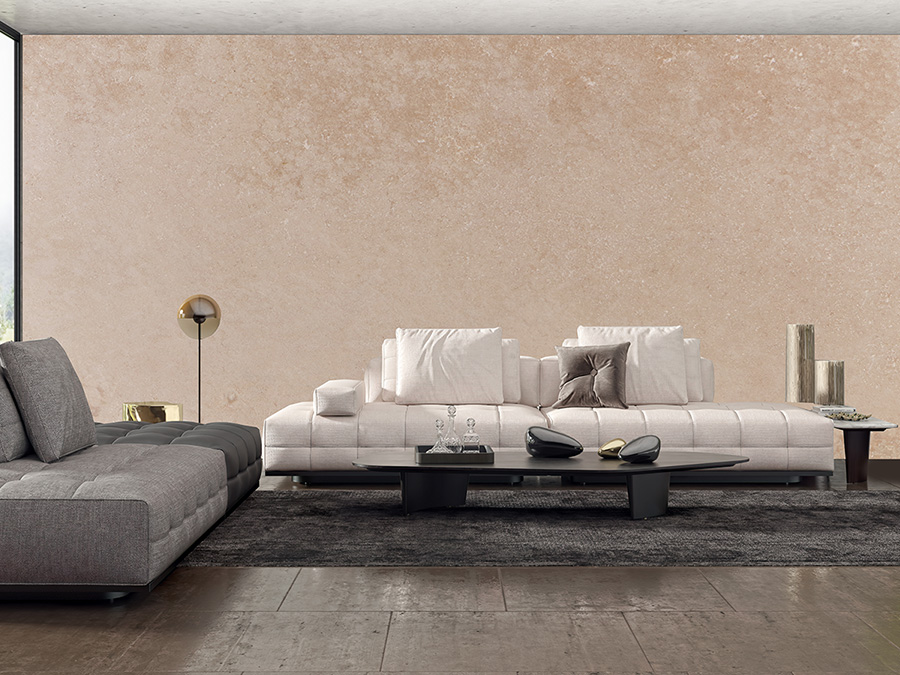
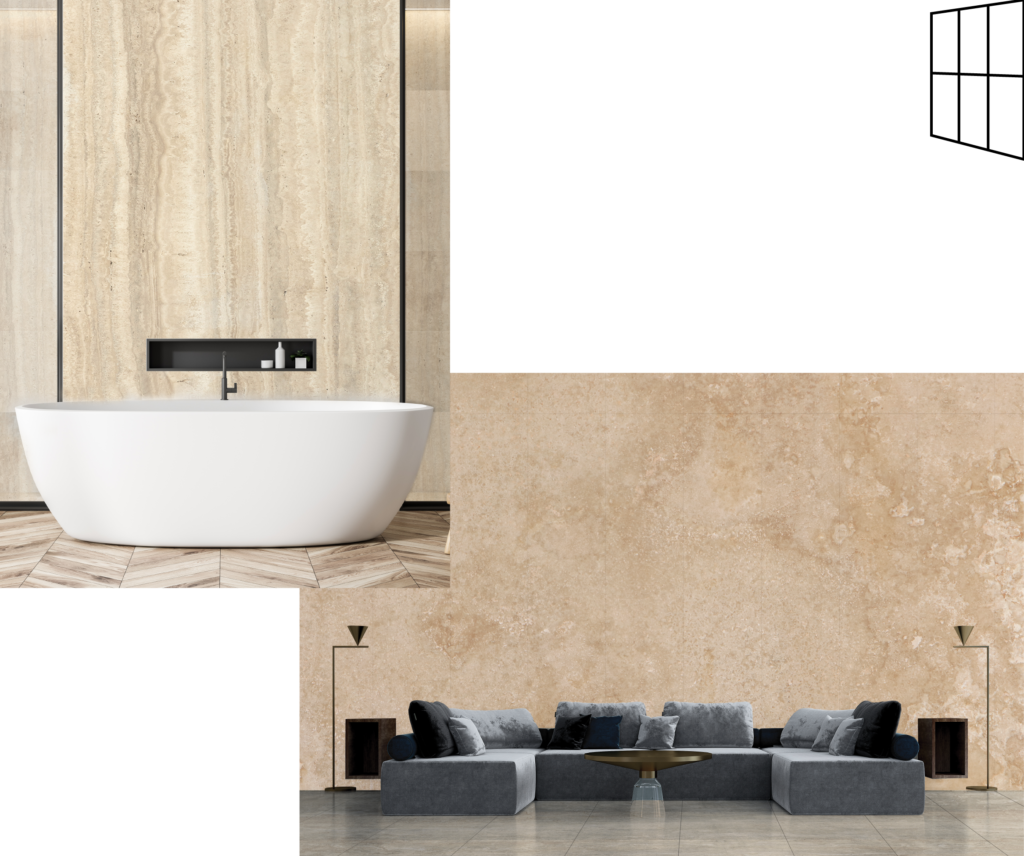
The cladding creates the atmosphere of each environment. The travertine is the real protagonist of the cladding scene: thanks to its textures and chromatic variety, it manages to combine elegance and harmony. A timeless coating suitable for any environment should it be modern or classic.
Outdoor Flooring
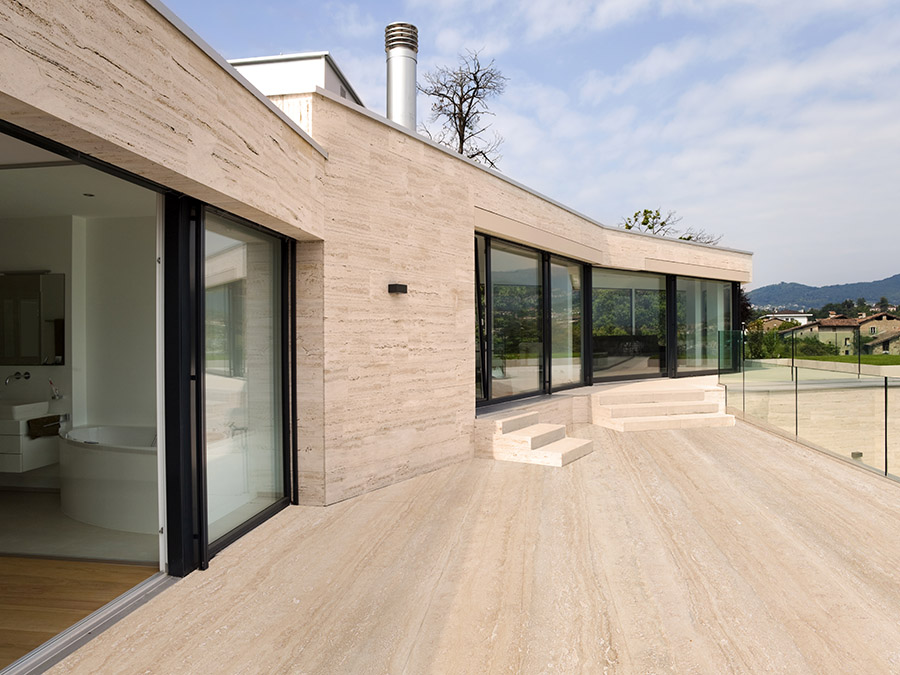
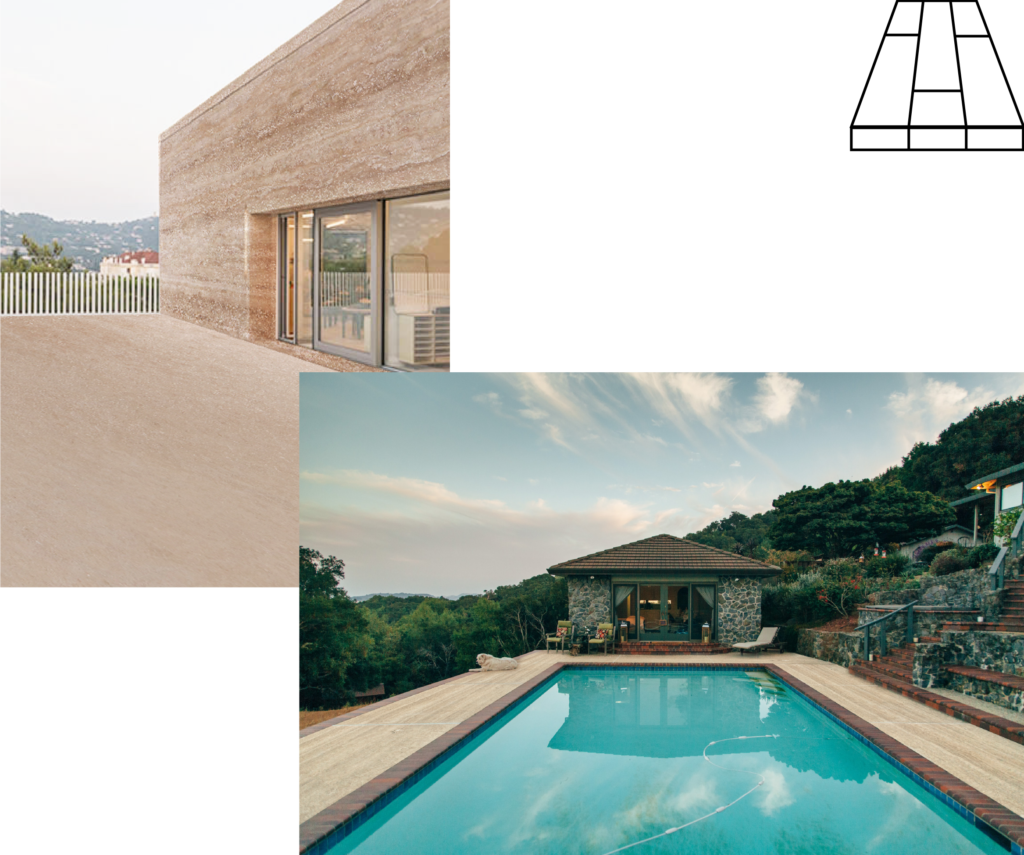
Thanks to its intrinsic properties travertine is the perfect stone for external uses. It is a natural stone that requires low maintenance, even if exposed to extreme weather conditions. Its non-slip feature can be enhanced by the finishing and the right treatment will hamper the absorption of watery. Travertine is by far the material historically most used for flooring as it manage to preserve an unaltered beaty over time.
Facade
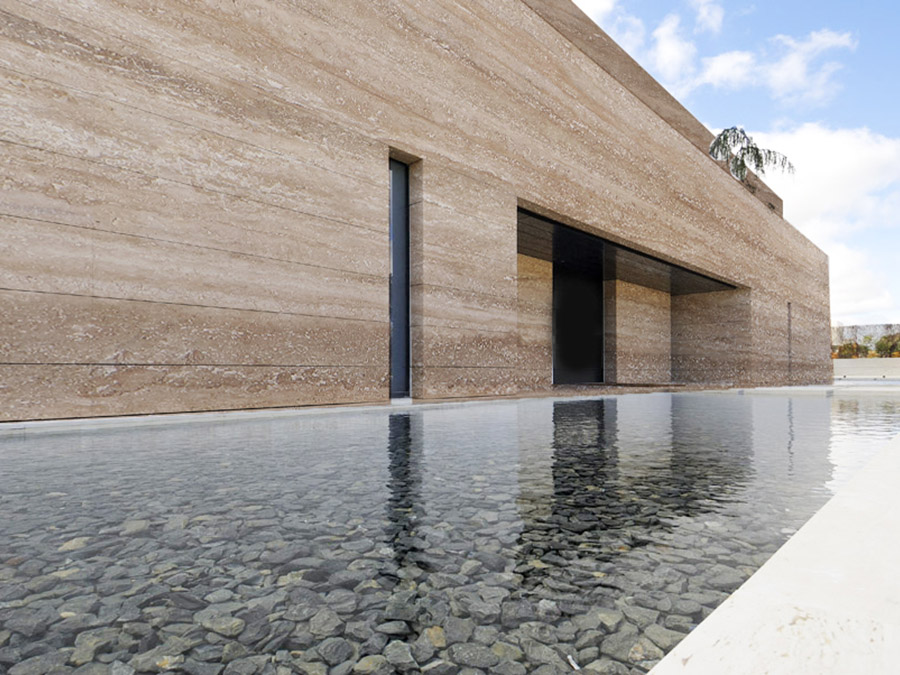
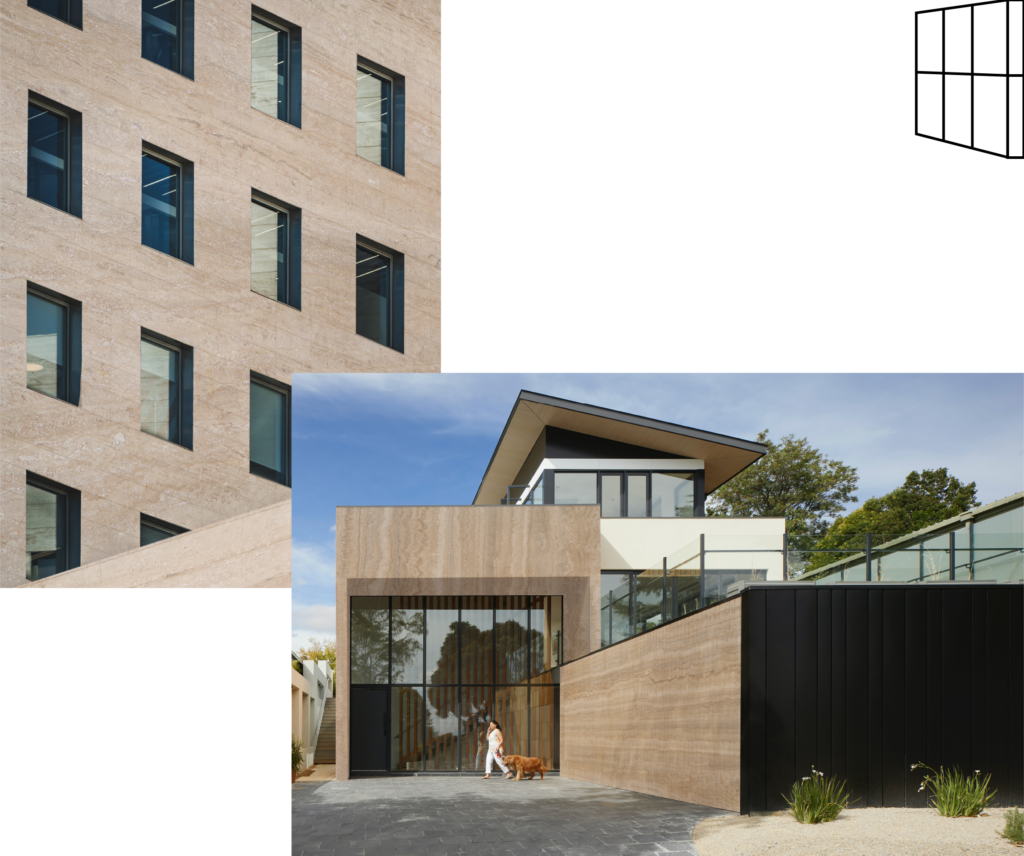
An exterior clad in travertine is the perfect choice for a unique and prestigious building. External walls require strong materials capable of withstanding the extreme weather condition without deterioration and remaining beautiful at the same time. Travertine, one of the oldest material used for this scope, is always the right facade cladding choice due to its sheer elegance, icon of modernity and class that denotes exclusivity.

